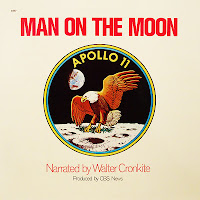Throughout a long life well-lived, Brubeck retained an odd stature with music critics: one in which, seemingly, no matter how many of them put in writing that the man's music had never received its full due, that basic, underlying fact never changed. One reason that Brubeck always remained a consumer's jazzman was his very popularity with those consumers. For many jazz theoreticians, his lack of "true" musical vision was as well evidenced by the continued charting of his albums through the rock-heavy 1960s as by his disinterest in the free structure associated with the avant garde. Another reason is his affiliation with the Cool Jazz movement, one which lacked the political intrigue - and, it must generally be said, the sheer virtuosity - associated with bop.
Finally, of course, Brubeck was white. As with white artists in most other traditionally black musical arenas, white jazzmen have faced an uphill climb towards legitimacy. (Such dubiousness is often justified: for every Eminem there is usually at least one Vanilla Ice, and for every Elvis Presley a Pat Boone.) Unfortunately, this incredulity by association has tended to overshadow Brubeck's role as one of jazz's most forward-thinking bandleaders. His quartet, after all, became integrated at nearly the same time as the higher-profile addition of Bill Evans to Miles Davis' quintet. (He had also led an integrated band in Europe during his service in WWII.) Brubeck continued to cancel appearances that protested the presence of his bassist, Eugene Wright, until such protests finally stopped. Perhaps the most poignant evidence of the impact racial affairs had on Brubeck emerged 40 years later, during the filming of Ken Burns' Jazz, when he broke down in tears as he recounted his thoughts following the war:
You know the first black man that I saw, my dad took me to see on the Sacramento River in California and he said to his friend, "Open your shirt for Dave." There was a brand on his chest. And my dad said, "These things can't happen." That's why I fought for what I fought for.
Like Davis, Coleman, Coltrane, and Mingus, Brubeck released great albums both before and after his 1959 masterpiece; more than any of them, though, Brubeck's album has singularly defined his career. Time Out can more than stand on its own musical merits. The success of its pioneering experimentation with strange time signatures lies less in the act itself than in its unobtrusive execution. It's also impossible to deny the catchiness of the immortal "Take Five," or the beauty of "Blue Rondo à la Turk." The album is timeless, though, on account of its mood, and here it stands apart from the other landmarks mentioned above. The Shape of Jazz to Come and Giant Steps are opening salvos, and they continue to resound, first and foremost, with the air of great artists announcing themselves. Mingus Ah Um, by contrast, is a refinement of that which preceded it - the sharpening of the sweep and fury of Pithecanthropus Erectus that would ultimately culminate in The Black Saint and the Sinner Lady. Predictably, among the five, Time Out is closest in spirit to the sublime Kind of Blue. Yet where the latter's magic lies in the otherworldly nature of its perfection - drummer Jimmy Cobb famously argued that it "must have been made in heaven" - the calm of the former is decidedly of this earth. The effortlessness of the performances throughout seem to owe more to comfort than to confidence, and it's no coincidence that Brubeck was the only man of the five (save possibly Coltrane) who could accurately have been described as a "gentle soul." With his passing, jazz does not lose the last of its titans, but it does bid farewell to the one man among them who more than any other survivor represented calm amidst the storm. In the end, more than his undeniable chops or monumental output, Brubeck's legacy will rest on his basic decency, which as both a person and a musician made him a man truly worth admiring.


















